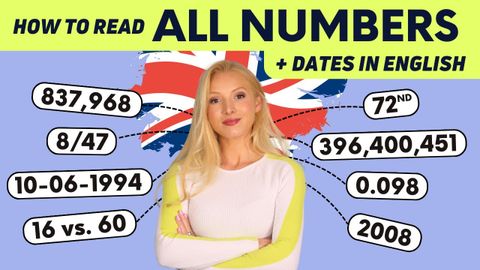如何用英語讀出所有數字 - 大數、小數、日期、分數、電話、序數 (How to read ALL NUMBERS in English - BIG NUMBERS, Decimals, Dates, Fractions, Phones, Ordinals)
VoiceTube 發佈於 2024 年 09 月 03 日  沒有此條件下的單字
沒有此條件下的單字- n. (c./u.)範本;典範;圖案;花樣;模式;方式;規律;紙樣
- v.t.仿造;用圖案裝飾
- n. (c./u.)公有地;公共用地;廣場
- adj.共用的;常見的;普通的;普遍的;粗俗的;普通名詞
US /ˈkɑnfɪdənt/
・
UK /ˈkɒnfɪdənt/
- adj.有自信的;確信的;樂觀的;大膽的
- n.有自信的人
- v.t.用重音讀;(施加)壓力;強調,著重指出
- n. (c./u.)重音;壓力;壓力
- v.i.(感到)壓力;緊張
